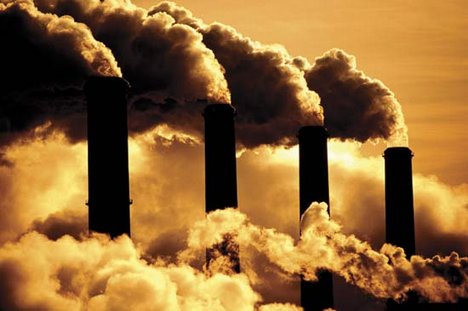
New Managing Director for Bellona Norway
The Board of the Bellona Foundation has appointed former Minister of Climate and the Environment Sveinung Rotevatn as Managing Director of Bellona No...
News

Publish date: October 10, 2018
News
As if climate reports from the United Nations and Russia’s environmental ministry weren’t bad enough, Moscow’s federal meteorological agency has followed with dire news of its own, spotlighting the already visible changes global warming is wreaking in the Arctic.
The document, as cited by the Independent Barents Observer, was published by Rosgidromet, Russia’s state weather and atmospheric service – and it paints a stark picture of rising Arctic temperatures that have already broken records that are decades old.
It’s also the second alarming climate report in two months issued by a Russian government apparatus, giving some hope that Moscow might be changing its traditional laissez-faire approach to global warming.
Above the Arctic Circle, says Rosgidromet, air is already 2.7° degrees Celsius warmer on average – well above the 1.5 to 2 degree Celsius rise that the Paris Climate agreement hopes to hold the world to. That breaks every record since Rosgidromet began keeping charting the data in 1936.
Worse still are temperature rises in the region of the Kara Sea, which has seen the dramatic warming in the past 30 years alone. In the last ten years, the mercury has risen some 4.7 degrees Celsius on average.
Arctic ice cover is shrinking too, down to 4.74 million square kilometers in 2017 from its usual 6 million square kilometers – though the report concedes the level was at its lowest – at 3.37 million square kilometers – in 2012.
Rosgirdomet reached its frightening conclusions by analyzing data from 250 weather stations, as well as its system of meteorology buoys positioned throughout the Arctic.
The areas in special peril include nearly all of Russia’s 6,000-kilometer long Arctic coast, as well as all of its major Archipelagos, such as Novaya Zemlya, Franz Josef Land and the New Siberian Islands.
But the most shocking effects of global warming, says the agency, are visible on the mainland in Northern Siberia, where massive industrial and mining centers are in danger from melting permafrost.
In some places, like the Yamal Peninsula –– home to a massive natural gas recovery operation –– permafrost levels have declined by as much as 26 centimeters. Nadym, an oil producing settlement in northwestern Siberia, has seen its permafrost shrink by 38 centimeters. And Norilsk, where the sprawling factories and smelting works of Norilsk Nickel are located, has seen its permafrost reduced by 22 percent.
All of this spells major trouble for all manner of delicate infrastructure. There are over 75,000 kilometers of oil pipelines stitched across Siberia, many of which could become vulnerable to spills should the ground begin to melt out from beneath them.
The same hazards are faced by the highway system, to say nothing of buildings, whose foundations will begin to corrode and crumble as the ground softens. But industrial centers pose special risks, says the report. Should they begin to collapse, it will expose the environment to lethal chemicals, biological hazards and radiation.
The Kremlin meanwhile has pushed back its prospective ratification of the Paris Climate Agreement to nearly 2020 –five long years after it originally signed the accord.
To justify this stance, Moscow has often argued that climate change would bring economic benefits to Russia’s wintery landscape, increasing crop growing season, lengthening the months during which construction can continue, and melting ice along the Northern Sea Route, making Arctic navigation year round.
But as the Rosgidromet report suggests, all of the other catastrophes the country might be forced to handle along the way could make those perceived gains seem dubious.

The Board of the Bellona Foundation has appointed former Minister of Climate and the Environment Sveinung Rotevatn as Managing Director of Bellona No...

Økokrim, Norway’s authority for investigating and prosecuting economic and environmental crime, has imposed a record fine on Equinor following a comp...

Our op-ed originally appeared in The Moscow Times. For more than three decades, Russia has been burdened with the remains of the Soviet ...

The United Nation’s COP30 global climate negotiations in Belém, Brazil ended this weekend with a watered-down resolution that failed to halt deforest...